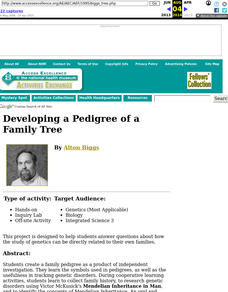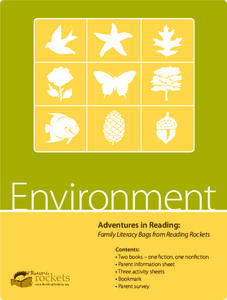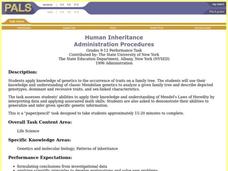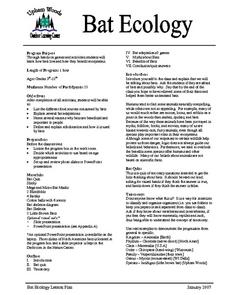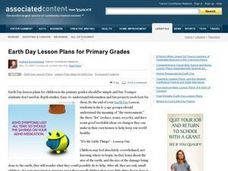Curated OER
Role Models
First graders identify heroes by researching their family history. In this personal heritage lesson, 1st graders define the term "hero" and the characteristics that represent it. Students research family resources and family trees in...
Curated OER
Where'd You Get Those Genes?
Really a unit, this resource exposes middle schoolers to genetics at their level. They read interviews and biographies, trace a family tree, play games that simulate inheritance concepts, and more! Teacher's procedures, student...
Curated OER
Developing a Pedigree of a Family Tree
Learners create a family pedigree as a product of independent investigation. They learn the symbols used in pedigrees, as well as the usefulness in tracking genetic disorders. During cooperative learning activities, students learn to...
Curated OER
Human Origins: The Prehistoric Human Race
When it comes to the origin of the human species young scholars are full of misconceptions. Clear up the hominid confusion with this evolutionary activity focused on assisting students in understanding prehistoric man and his family...
Curated OER
Studying Species by Examining the Evolution of the Canidae Family
Students examine the definition of species. Students complete a phylogentic tree of the Canidae family. They write an essay justifying why or why not wolves and dogs should be classified as different species.
PBS
Reading Adventure Pack: Bees
A Reading Adventure pack explores the busy life of bees. After reading a fiction and nonfiction text, scholars complete three hands-on activities. Participants invent a robot that can do the work of bees, cheers to hardworking bees with...
Curated OER
Studying Species By Examining the Evolution of the Canidae Family
Young scholars read an article on the characteristics of wolves and dogs then complete a phylogenetic tree of the canid family. They then write an essay justifying why or why not wolves and dogs should be classified as different species.
Curated OER
Chromosomes
Students explore genetics, chromosomes and DNA. In this genetics lesson students design a chromosome and identify a family tree through genetics.
PBS
Reading Adventure Pack: Environment
A fiction and nonfiction text, The Great Kapok Tree: A Tale of the Amazon Rain Forest by Lynne Cherry and I See a Kookaburra! Discovering Animal Habitats Around the World by Steve Jenkins and Robin Page begins a learning experience in...
Curated OER
Mancos River Walk Newsletters
Sixth graders create newsletters of the Mancos River Walk. They gather information from the Mancos River Walk and create a newsletter detailing sections of trees, shrubs, river studies, and wildlife studies. They write stories and...
Curated OER
Human Inheritance
High schoolers analyze genetic characteristics in a given family tree through the F2 generation. Students apply prior knowledge from Gregor Mendel's study with pea plants and his Laws of Heredity to answer questions.
Curated OER
Health/Wellness
Middle schoolers role-play the role of an employee of the Center for Disease Control. In groups, they identify and discuss the functions of the major body systems and analyze their family tree. They watch a video about plagues and...
Curated OER
Bat Ecology
Students, through hands on games and activities, discover how bats live and how bats benefit ecosystems. They play a game designed to show them how echolocation works and another to show how mother bats locate their young through their...
Curated OER
Types of Things
Students explore the differences between man-made and natural objects. In this lesson designed to compare properties of objects, students differentiate between natural and man-made objects and complete an activity designed to show what...
Howard Hughes Medical Institute
Survival of the Fittest - Variations in the Clam Species Clamys sweetus
It's not often that you come across a clever laboratory activity that is both imaginative and comprehensive! Using M&M's and Reese's peanut butter candies to represent two different clam species, young biologists test for "relative...
American Museum of Natural History
Pterosaurs: The Card Game
Piecing together the past is a challenging endeavor. Learners get a taste of that challenge as they play a game that incorporates several components such as trophic levels, geological time periods, and catastrophic events. Pairs work to...
Curated OER
Dichotomous Key
Middle schoolers draw comparisons between organisms. They classify organisms. Students are introduced to dichotomous keys and how to create and use a dichotomous key to identify a variety of objects. They begin by defining...
Curated OER
Seeds in Fall...Collect Them All!
Classify seeds by attributes such as size, shape and color! Learners classify seeds using a dichotomous key. They identify human behaviors that have a positive impact on preserving seed and plant biodiversity.
Curated OER
Top 10 Summer Science Lesson Plans
Make this summer an exciting learning experience for your students with these engaging science activities!
Curated OER
Birds of Wisconsin
First graders explore the job done by ornithologists. They role play identifying the characteristics that make a bird a bird. They discuss what makes each bird species unique. Students are introduced to Wisconsin's most common and rare...
Curated OER
Earth Day
Students complete a variety of Earth Day activities. For this recycling and the environment lesson, students listen to Earth friendly music, create a car out of juice boxes, use soda cans and bottle caps to create a Halloween...
Curated OER
3-D Posters
Students work in small groups to create 3-D posters to discourage throwing trash away and encourage recycling.


